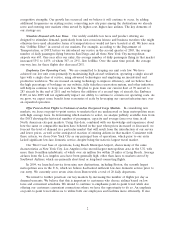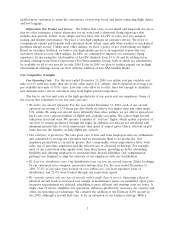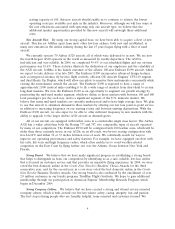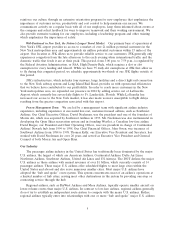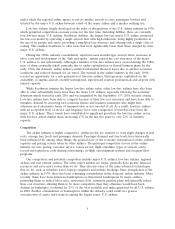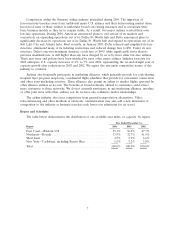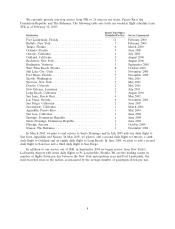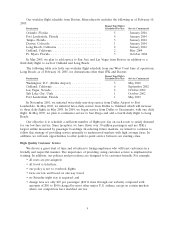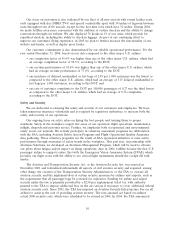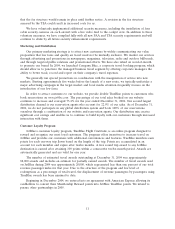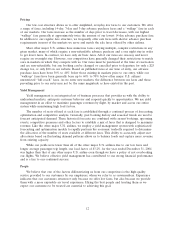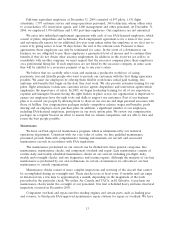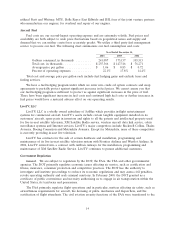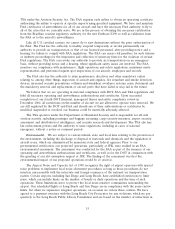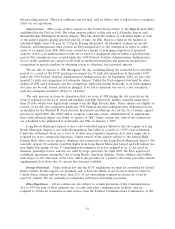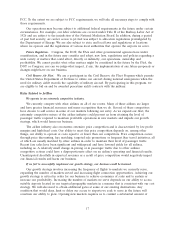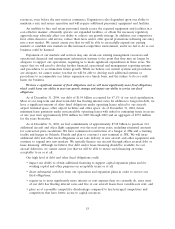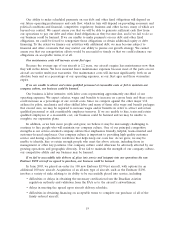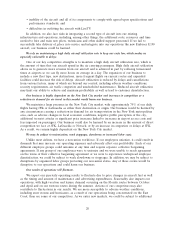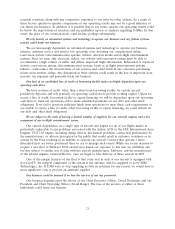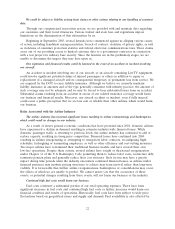JetBlue Airlines 2004 Annual Report Download - page 20
Download and view the complete annual report
Please find page 20 of the 2004 JetBlue Airlines annual report below. You can navigate through the pages in the report by either clicking on the pages listed below, or by using the keyword search tool below to find specific information within the annual report.Pricing
Our low cost structure allows us to offer simplified, everyday low fares to our customers. We offer
a range of fares, including 14-day, 7-day and 3-day advance purchase fares and a ‘‘walkup’’ fare in each
of our markets. Our fares increase as the number of days prior to travel decreases, with our highest
‘‘walkup’’ fare generally at approximately twice the amount of our lowest 14-day advance purchase fare.
In addition to our regular fare structure, we frequently offer sale fares with shorter advance purchase
requirements in most of the markets we serve and match the sale fares offered by other airlines.
Most other major U.S. airlines have numerous fares carrying multiple, complex restrictions in any
given market, many of which require a non-refundable advance purchase and a one night stay in order
to get lower fares. In contrast, we have only six basic fares. All of our fares are one-way and never
require an overnight stay. However, our competitors have generally changed their restrictions to match
ours in markets in which they compete with us. Our fares must be purchased at the time of reservation
and are non-refundable, but any booking can be changed or cancelled prior to departure for only a $25
change fee, or only $20 on our website. Based on published fares at our time of entry, our advance
purchase fares have been 30% to 40% below those existing in markets prior to our entry, while our
‘‘walk-up’’ fares have been generally been up to 60% to 70% below other major U.S. airlines’
unrestricted ‘‘full coach’’ fares. As we enter new markets, the difference between our fares and those
prevailing prior to our entry may not be the same magnitude as have existed in the past.
Yield Management
Yield management is an integrated set of business processes that provides us with the ability to
understand markets, anticipate customer behavior and respond quickly to opportunities. We use yield
management in an effort to maximize passenger revenues by flight, by market and across our entire
system while maintaining high load factors.
The number of seats offered at each fare is established through a continual process of forecasting,
optimization and competitive analysis. Generally, past booking history and seasonal trends are used to
forecast anticipated demand. These historical forecasts are combined with current bookings, upcoming
events, competitive pressures and other factors to establish a mix of fares that is designed to maximize
revenue. Like the other major U.S. airlines, we employ a yield management system with sophisticated
forecasting and optimization models to rapidly perform the economic tradeoffs required to determine
the allocation of the number of seats available at different fares. This ability to accurately adjust seat
allocations based on fluctuating demand patterns allows us to balance loads and capture more revenue
from existing capacity.
While our yields were lower than all of the other major U.S. airlines due to our low fares and
longer average passenger trip length, our load factor of 83.2% for the year ended December 31, 2004
was higher than that of any other major U.S. airline even though we have a policy of not overbooking
our flights. We believe effective yield management has contributed to our strong financial performance
and is a key to our continued success.
People
We believe that one of the factors differentiating us from our competitors is the high-quality
service provided to our customers by our employees, whom we refer to as crewmembers. Experience
indicates that our customers return not only because we offer low fares, but also because we provide
them with a more enjoyable air travel experience. Hiring the best people and treating them as we
expect our customers to be treated are essential to achieving this goal.
12


